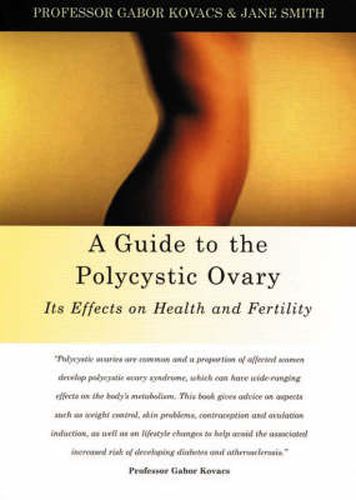Readings Newsletter
Become a Readings Member to make your shopping experience even easier.
Sign in or sign up for free!
You’re not far away from qualifying for FREE standard shipping within Australia
You’ve qualified for FREE standard shipping within Australia
The cart is loading…






Several studies have looked at populations of volunteers, women from the electoral roll and women attending general practices, and have reported the ultrasound appearance of polycystic ovaries in as many as one in three to one in five. If groups of women with irregular periods are looked at, up to 90 per cent will have polycystic ovaries at ultrasound. Similarly, when women with increased facial and body hair are screened, about 90 per cent will have polycystic ovaries, as will three out of four women with acne. It has also been suggested by some studies that women with recurrent miscarriage or early pregnancy loss after in-vitro fertilisation have an increased incidence of polycystic ovaries. However, not all studies support this hypothesis, and additional research is needed to evaluate this further. This book looks at the historical background of this condition; the structure and function of the female genital organs; symptoms and signs; diagnostic techniques; the inheritance of polycystic ovary syndrome; long-term effects; lifestyle factors; polycystic ovaries and the skin; ovulation induction; surgical treatment to induce ovulation; in-vitro fertilisation; pregnancy outcomes.
$9.00 standard shipping within Australia
FREE standard shipping within Australia for orders over $100.00
Express & International shipping calculated at checkout
Several studies have looked at populations of volunteers, women from the electoral roll and women attending general practices, and have reported the ultrasound appearance of polycystic ovaries in as many as one in three to one in five. If groups of women with irregular periods are looked at, up to 90 per cent will have polycystic ovaries at ultrasound. Similarly, when women with increased facial and body hair are screened, about 90 per cent will have polycystic ovaries, as will three out of four women with acne. It has also been suggested by some studies that women with recurrent miscarriage or early pregnancy loss after in-vitro fertilisation have an increased incidence of polycystic ovaries. However, not all studies support this hypothesis, and additional research is needed to evaluate this further. This book looks at the historical background of this condition; the structure and function of the female genital organs; symptoms and signs; diagnostic techniques; the inheritance of polycystic ovary syndrome; long-term effects; lifestyle factors; polycystic ovaries and the skin; ovulation induction; surgical treatment to induce ovulation; in-vitro fertilisation; pregnancy outcomes.